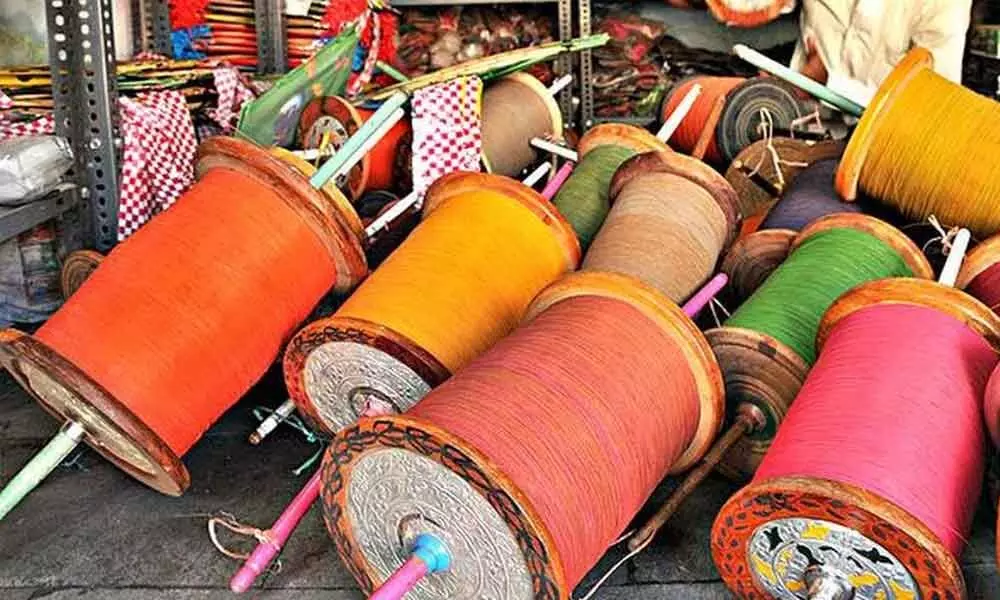Thane: Nylon manjha, the dangerous thread banned for its risks to humans, animals, and the environment, continues to pose a challenge for authorities. In a recent case, a 45-year-old man from Bhiwandi, Thane, was booked for allegedly possessing and selling the prohibited material.
The accused, identified as Mois Atul Shah, a resident of Nehru Nagar in Navi Basti, Bhiwandi, was caught during a police patrol on December 8. Authorities found him in possession of the banned nylon manjha, commonly used for kite flying, and confiscated material worth over ₹1,300.
What Makes Nylon Manjha Dangerous?
Nylon manjha, often referred to as Chinese manjha, is made with finely ground glass, metal, or other sharp materials. This thread, while effective for kite flying, poses severe risks:
- To Humans: The sharp edges of nylon manjha can cause deep cuts and injuries, especially to motorcyclists or pedestrians who come into contact with it.
- To Animals: Birds often get entangled in the thread, leading to fatal injuries or death. Animals are also at risk if they accidentally ingest the thread.
- Environmental Harm: Nylon manjha is non-biodegradable, clogging sewage and drainage systems and contributing to pollution.
Due to these dangers, the National Green Tribunal (NGT) has banned the production, sale, storage, and use of nylon manjha across India.
Police Action And Legal Implications
The case was filed by Samadhan Bhosale, a police constable in Bhiwandi City, under multiple sections of the law, including:
- Sections 125(A) and 223 of the Bharatiya Nyay Sanhita
- Sections 5 and 15 of the Environment Protection Act
These charges underscore the seriousness of the offense, reflecting the risks nylon manjha poses to public safety and the environment.
The Persistent Challenge Of Enforcement
Despite the ban, cases of nylon manjha possession and use continue to surface. The profit-driven trade in banned manjha remains lucrative, with many unaware of its dangers or willing to flout regulations for personal gain.
Authorities have increased patrolling and raids, especially during the kite-flying season, to curb the use of nylon manjha. However, the ease of access and demand for the product make enforcement a constant challenge.
Impact Of Nylon Manjha On Wildlife
Birds are among the most affected by nylon manjha. During kite-flying festivals, many birds get caught in the sharp thread, leading to severe injuries or death. Wildlife rescue organizations report a significant rise in cases of bird injuries during such events, emphasizing the urgent need for public awareness and stricter enforcement.
Additionally, the environmental impact of non-biodegradable manjha contributes to long-term ecological harm. By clogging drains and water bodies, it exacerbates urban flooding and pollution.
Public Awareness: A Key To Ending The Issue
While enforcement is critical, public awareness plays an equally important role in addressing the problem. Educating communities about the risks of nylon manjha can lead to a decline in demand.
Kite enthusiasts can be encouraged to switch to eco-friendly alternatives such as cotton thread. Festivals and community events can also highlight the dangers of nylon manjha through campaigns and workshops.
Way Forward
The arrest in Bhiwandi serves as a stark reminder of the ongoing threat posed by nylon manjha. With stricter legal actions, increased vigilance by authorities, and greater public awareness, steps can be taken to mitigate the risks associated with this banned material.
Communities must also take responsibility to ensure that the use of harmful products like nylon manjha is replaced with sustainable alternatives, protecting both people and the environment.



